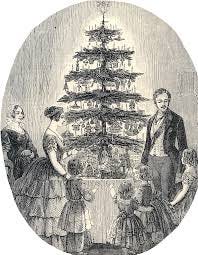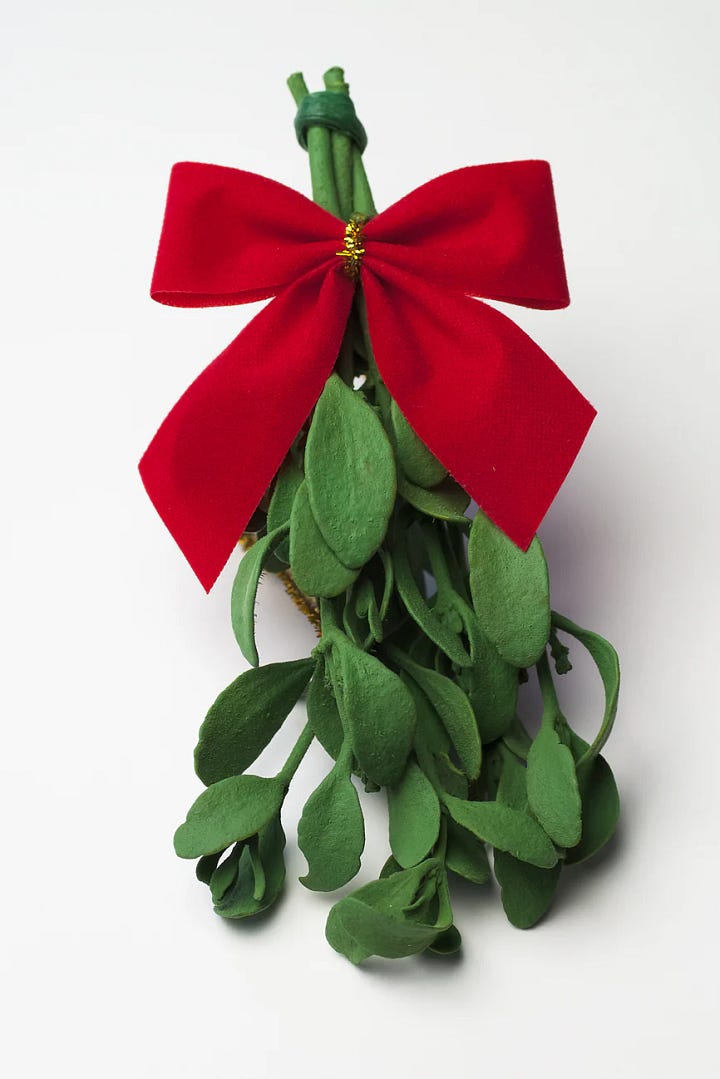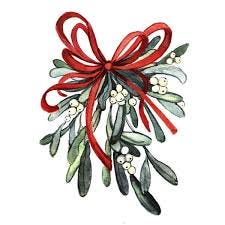Plants, such as holly and evergreens, play a big role in Christmas traditions, even more so if you’re avoiding plastic or commercialism. We hear about them in Christmas songs and see them on Christmas cards, and even have some of them in our homes.
Are Christmas trees a pagan symbol? Why are we supposed to kiss under mistletoe? What’s up with “The Holly and the Ivy”?
But let’s talk about the history of some of these plants. And when I mean history, I really mean history. Ancient Egyptians and Romans would celebrate the winter solstice by bringing green branches into homes and temples to celebrate the triumph of life over death and as a reminder that spring would be coming after the long winter.
The Romans celebrated the feast of Saturnalia, honoring Saturn, their god of agriculture and time, often depicted with a scythe and influencing our concepts of Father Time and The Grim Reaper.
Druids and Vikings (more on them later) also decorated their sacred spaces with evergreen branches. And while we think of evergreen branches as coniferous, this also included deciduous plants (like holly and ivy.)
The Christmas Tree Controversy - Did we just reclaim a pagan symbol?
We all love the ubiquitous Christmas tree… don’t we? Despite living in the Christmas tree capital of the world, I have friends who choose not put up Christmas trees because they are convicted that Christmas trees are a pagan symbol.
They are often concluding this from ancient solstice celebrations.
Decorated indoor Christmas trees became a popular thing in Germany in the 16th century, during the Protestant Reformation, and even Martin Luther decorated a tree for Christmas. The concept of the Christmas tree as a decorated evergreen tree often brought indoors stems from the combination of two different practices. In religious passion plays used to educate an illiterate populace, the Tree of the Knowledge of Good and Evil was often depicted as a conifer with apples tied to its branches. At the same time, the Christmas Light or ceppo was a pyramid decorated with a nativity scene, decorations, and a light on top (symbolizing Christ as the Light of the world.) The combination of the two became our modern idea of the Christmas Tree.
200 years later in 1846, Queen Victoria (the last member of the house of Hanover, of German origin) decorated a Christmas tree. This is when decorating Christmas trees really became popular in England.
The United States was slower to adopt the Christmas tree tradition, although some German communities in Pennsylvania often decorated trees or did something similar. From 1659 with the Puritans outlawing Christmas and fining people if they hung decorations, up until about 1880s, when Benjamin Harrison had a tree in the White House, Christmas trees were viewed as pagan symbols in America.
German trees, at four feet and displayed on a table, tended to be shorter than American trees, which were displayed on the floor. This was possibly affected by the availability of trees— Germany has suffered from deforestation.
Does the Christmas tree have pagan roots? Possibly. But the Christmas tree only dates back to the 1600s. They’re not nearly as ancient as the pagan traditions that Christmas tree opponents claim. Those traditions included a wide variety of evergreen plants, and this line of reasoning would say that one should avoid any green plants indoors during winter.
On the other hand, one could argue that plants are God’s creation and are not inherently pagan. Answers in Genesis lists a dozen or so positive references to trees and evergreens in scripture, that predate Saturnalia and other pagan practices.
In the end it comes down to personal conviction — if a tree is going to tempt you away from worshiping Christ, then by all means, don’t have one in your house. However, this does seem like a “weaker brother” situation. I believe the Christmas tree, regardless of whether or not it was ever a “pagan symbol,” has enough God-honoring symbolism to be a meaningful addition to any home.



Traditional symbolism of the tree includes:
God’s “evergreen” love.
Christ is the Light of the world.
Looking forwards to the end of winter (Christ’s second coming)
Perseverance and steadfastness, as the trees bear the cold weather without fading. An image of Christian faith in trials.
Why are we supposed to kiss under mistletoe?
Unlike the Christmas tree, mistletoe is very much a pagan tradition. (Marvel fans might hate me for this one.) Balder was the god of innocence and light, the son of Frigga, Norse goddess of love. Frigga asked all the things on earth to promise not to hurt her son, but overlooked mistletoe. Possibly because it was small, or possibly because of how high up it grows. Loki, god of mischief, used the mistletoe to kill Balder, god of light. The white berries symbolize Frigga’s tears. She made the mistletoe promise not to harm anyone again and instead, being the goddess of love, decreed that the mistletoe as a symbol of peace, love, and making truces with enemies, which is where we get our tradition of kissing under the mistletoe (However that tradition didn’t start until the mid 1700’s.)
Practically, mistletoe had healing properties and became associated with fertility across different cultures.
Mistletoe gained mythical symbolism because of how it grew. It’s a parasite that has no roots. Instead, it spreads through oak trees via bird droppings. (Mistletoe translates to dung-twig.) However, it was though to be the soul of the oak tree by the Celts. It was considered bad luck to let mistletoe hit the ground, or at least better luck to catch it.
The kissing part of mistletoe came from its association with love and making truces and started sometime after 1720. Michael P. Foley, a mistletoe expert, thinks that kissing specifically is influenced by the Christian tradition of greeting each other with a brotherly kiss. Mistletoe might not be as pagan as originally thought. But the bulk of mistletoe traditions originated as a combination of Norse, Celtic and Roman mysticism.


Mistletoe is a symbol of:
love and peace (according to Nordic legends)
finding treasure and opening locks (according to northern European customs)
overcoming difficulties (according to Victorian flower language.)
I personally am fascinated by this symbolism, (and I don’t think the pagan roots render stories or plants dangerous to the discerning Christian) but definitely wouldn’t want to get caught under the mistletoe.
What’s up with the holly and the ivy?
These are both evergreen plants, and they often are found growing together, since they like similar conditions. Their hardy nature often means they’re considered invasive, but historically, they provided festive cheer in winter when the other plants were dry and brown.
In the famous carol, The Holly and the Ivy, the holly represents Christ while the Ivy represents His mother Mary.
The holly is said to represent Christ’s crown of thorns and the berries represent His blood. The ivy represents Mary as she holds Christ, and the vine’s clinging nature is used as a reminder that we should cling to faith.


Holly and ivy, along with mistletoe, were also used by Celtic druids in pagan celebrations. Does that mean we should avoid them?
I don’t think we should, for a few reasons.
For one, they are things. They don’t actually have power. It’s the ideas and the stories that have power. We know hanging holly or other evergreens in our houses isn’t going to ward off evil or make our crops grow faster. But it can remind us of a King who died to conquer evil once and for all— and then rose again. And it can remind us of a God who created plants that are hardy and withstand the winter. If He takes care of the plants, His steadfast love will take care of us.
And secondly, I would argue that using plants as decorations is better than using plastic trinkets that have been mass produced and sold— artifacts of the cult of commercialism.
But whatever you choose to decorate your house with, it should be more than the things, whether it’s plants or plastic (hey, I’m a fan of plastic tinsel—way better tham the original lead-foil stuff!) It’s more important to focus on God and His narrative, which stars Christ, family, and fellowship.
I hope you have a wonderful Christmas season, and I’d love to see how you decorate!







Love the history!